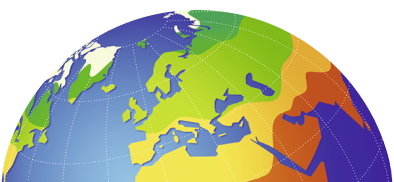The World - Children’s rights
Human rights and migration
978-3-14-100890-6 | Page 39 | Ill. 3

Overview
Children should be under the special protection of society. This is why the United Nations adopted the UN Convention on the Rights of the Child in 1990. Excerpts from it are included in the legend below right. Many of the rights mentioned in the Convention on the Rights of the Child are taken for granted in the developed countries of Europe. Nevertheless, according to the United Nations Children's Fund UNICEF, around 152 million children were working worldwide (as of 2019).
Indicators for children's rights
The situation worldwide is different. In many places children's rights are not respected, especially in the countries of Central and South America, Africa and parts of Asia the situation is very problematic. This can be seen in the following two indicators, which are shown in the map:
- The legal minimum age for employment determines that children are not allowed to work and young people are only allowed to work at a certain age. In almost all countries of the world, this minimum age has been set to 14, 15 or even 16 years since 1973 (see colours in the map). Accordingly, in none of the countries would a child of nine or eleven years, for example, be allowed to work.
- In contrast to the minimum age set by the convention, many countries have a high proportion of children between the ages of 5 and 14 who have to work. In Africa, this number is between 25 and 49 per cent. Even in some European countries such as Belarus, Ukraine and Romania, the proportion of working children is between 5 and 15 per cent.
Causes of child labour
Child labour can have many backgrounds. The main cause is the poverty situation in which many affected families live. Sheer need causes parents to send their children to work. Although child labour is particularly poorly paid, case studies show that children contribute between 25 and 40 per cent to the household income. Another cause is the lack of opportunity to attend school. In addition, especially in Asian countries like India, entire economic sectors are geared towards very low pay for employees and child labour, for example the textile industry. So, child labour often also has a structural component, from which consumers in industrialised countries benefit in the form of low prices. Another explanation for child labour is that children who grow up in an environment that is predominantly characterised by self-sufficiency and informal activities are often expected to follow the paths of their parents and get to know their work at an early age - at the expense of schooling that is considered unnecessary.
Violation of the UN Convention
If children have to work, it is often not possible for them to attend school and complete an education. As a rule, children do not make the decision to work voluntarily, but are forced to do so and are economically exploited. Many examples also show that occupational safety is completely neglected: Children are exposed to great dangers, for example through handling dangerous chemicals or exposure to dust. These examples show that child labour obviously violates the rights of the UN Convention on the Rights of the Child.
Further violations of children's rights
In addition to child labour, there are numerous other areas of life in which children's rights are violated to varying degrees, depending on the region of the world and the state. Examples are child marriage, sexual abuse, genital mutilation of girls and domestic violence or the lack of access to food, health care, clean drinking water and education.




